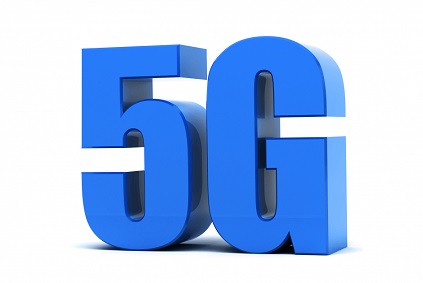The merging of Artificial Intelligence (AI), Internet of Things (IoT) and 5G is driving intelligent connectivity while also providing transformative opportunities for virtually every sector and shaping the rapid evolution of our digital economy. These technologies are each powerful on their own but when working in tandem, they create efficiencies, fuel innovation and further enhance new applications. Looking at 5G adoption in particular, while it has been slower than expected, these networks will lead by the end of the decade offering flexible infrastructure that’s critical to support IoT.
With more organisations looking into innovative ways to use these technologies together, it’s apparent that strong data governance must play a critical supporting role. Having a strong data and analytics platform acting as the “glue” that holds these technologies will help companies to unlock true value and new potentials.
The development of 5G
Although AI and IoT have already progressed significantly, improving the telecoms sector, we have yet to witness the full potentials of 5G. So far, it hasn’t lived up to its promise to reform how we work and play. This leads to the debate on whether 5G was overhyped, or if have we just been expecting too much too soon. To explore this further, let’s take the following two facts about the technology into consideration.
Firstly, it’s still early in the evolution of 5G. There’s still much to do to build out the infrastructure. This is supported by GSMA’s annual Global Mobile Economy Report which highlighted that 5G connections make up only about 20% of total connections. Not only that but they’re not expected to overthrow 4G’s predominance until 2028. This means that 5G won’t make up the majority of connections until the end of the decade – although, it will surpass five billion connections at that time.


Secondly, providing fast connections to end users was never the only objective of 5G. The broader motivation is to develop stronger, more flexible and configurable communications infrastructure—exactly what IoT needs. Only by using 5G networks can we have the capacity and capability to link millions of smart devices such as sensors, cameras, and robots. It provides us with the opportunity to add intelligence to the plethora of systems in use—from optimising network management and traffic to predicting potential system overload. Therefore, to ensure these connections are accomplished in an efficient and seamless manner, telecommunications service providers, specialist integrators, and individual businesses should invest in public and private 5G networks.
Unlocking data-driven insights
While the convergence of 5G, IoT, and AI will provide benefits, it’s worth considering how to govern the vast amounts of data that would result this. Intelligent devices benefitting from 5G, IoT and AI accumulate and share myriads of data – data that must be managed and used effectively to drive decision-making. Therefore, in order for companies to be able to unlock valuable insights, they will firstly need to create a robust data foundation to deploy data analytics and AI at a significant scale.
To illustrate how these technologies will support the telecoms sector in particular, let’s look at a few emerging use cases:
- Improved connectivity and speed: 5G technology provides much faster data transfer speeds and lower latency compared to previous generations (like 4G). When paired with IoT, data from millions of IoT devices can be transmitted, processed and analysed much faster and efficiently. AI can then optimise network management and traffic routing to increase speed and reduce congestion, improving the overall user experience.
- Enhanced network management: AI algorithms can manage and optimise network traffic more efficiently. It will also help in predicting traffic patterns and potential system overload, allowing telecom operators to allocate resources efficiently. As a result, it reduces the chances of network outages and ensures stable connectivity for users.
- Dynamic data analytics: IoT devices generate huge amounts of data. AI can analyse this data in real-time, offering insights that can be used for predictive maintenance, efficient energy management and so on. This not only helps in refining such services but also in identifying new opportunities while also improving customer satisfaction.


It’s worth noting again that that without efficient data governance to create synergy among the three “frontier” technologies, companies will not be able to experience any valuable results from their efforts.
Technology providers play an important role in providing the right data and analytics solutions companies need to use 5G, IoT, and AI to innovate and grow. For example, enhanced microservices that live within cloud analytics and data platforms for AI can enable customers to load data from 5G networks that monitor key performance indicators and predictions from the 5G core network.
As 5G networks continue expanding worldwide, more businesses are looking to explore the value of public and private 5G networks as part of a wider digital adoption. As seen above, the powerful triad has the potential to improve and modernise many existing processes to automate, create efficiencies and drive productivity. To ensure these efforts to not go to waste and instead help companies gain valuable insights, it’s important to ensure there’s a strong data architecture that holds them together. Collaborating with reliable technology third parties that understand a business’ unique journey is therefore imperative in successfully using AI, IoT and 5G to further innovate and gain competitive advantage.
Spokesperson: Laurent Laisney, Senior Industry Strategist at Teradata
Comment on this article via X: @IoTNow_ and visit our homepage IoT Now


